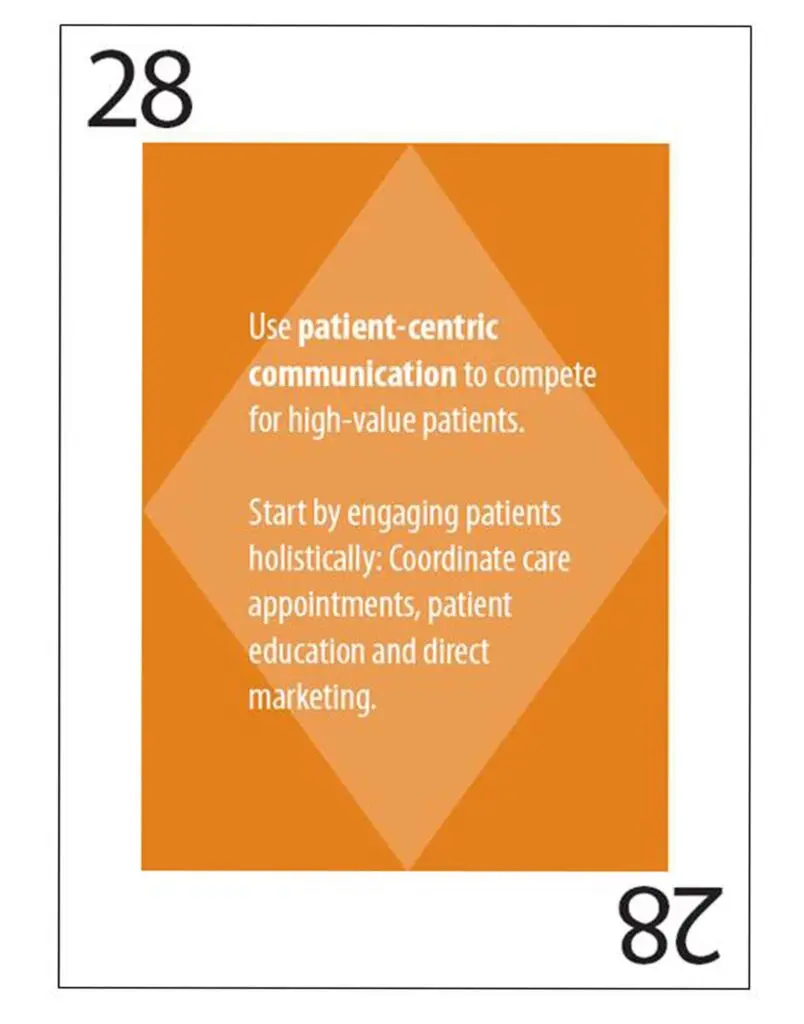Last year we developed a deck of 52 marketing tips and collected more from our peers at SHSMD. A big “thank you” goes to Lisa Crockett, Manager of Strategy and Business Development at Providence Health & Services for this month’s Healthcare Marketing Tip:
“Before starting any marketing effort, think about what patients will experience.”
Hospitals and other healthcare providers that differentiate themselves by building a brand identity around a patient-centered approach to care are poised to thrive in this era of healthcare consumerism. But the brand promise must meet healthcare consumers’ increasingly high expectations.
“It’s easy to be comfortable with how we’ve delivered healthcare in the past, but change is necessary if we want loyal patients,” said Crockett. “It’s important to continue to advance patient experience beyond acute care to patient’s lives post-discharge to ultimately improve outcomes and lower costs.” According to numerous studies, patient-centered care can lower operating costs and ultimately save hospitals time and money.
Other Benefits of Improved Patient Experience:
- Shorter patient stays
- Lower cost per case
- Reduced staff costs
- Low cost improvements can make the same impact as expensive ones
- Higher employee retention rates
- Decreased malpractice claims
Opponents of patient-centric care argue it won’t provide enough financial return to justify the cost associated with staff training and patient volume disruptions that can occur while programs and facilities are updated. Supporters of improved patient experience maintain that the benefits outweigh the costs; in addition, they say it is a moral obligation to provide a better experience. “It’s the right thing to do,” said Crockett. “If we’re not here to help people, then we’re in the wrong business.”
Patients have increasingly high expectations for the way care is delivered. Hospitals need to meet this demand by embedding the concepts of improved patient experience into the fabric of the hospital’s core values and culture. According to Crockett, most hospitals are already intent on improving patient satisfaction and they can make gains in improved patient experience by monitoring and quickly responding suggestions and complaints. “Thank you notes and complaint letters tell you a lot about gaps in service. Once you involve everyone on the healthcare team in the changes that are made, you’ll start to see the benefits of patient-centric care.”
What ways has your hospital or practice implemented patient-centered care? Let us know in the comments or on Twitter @DobiesGroup.

